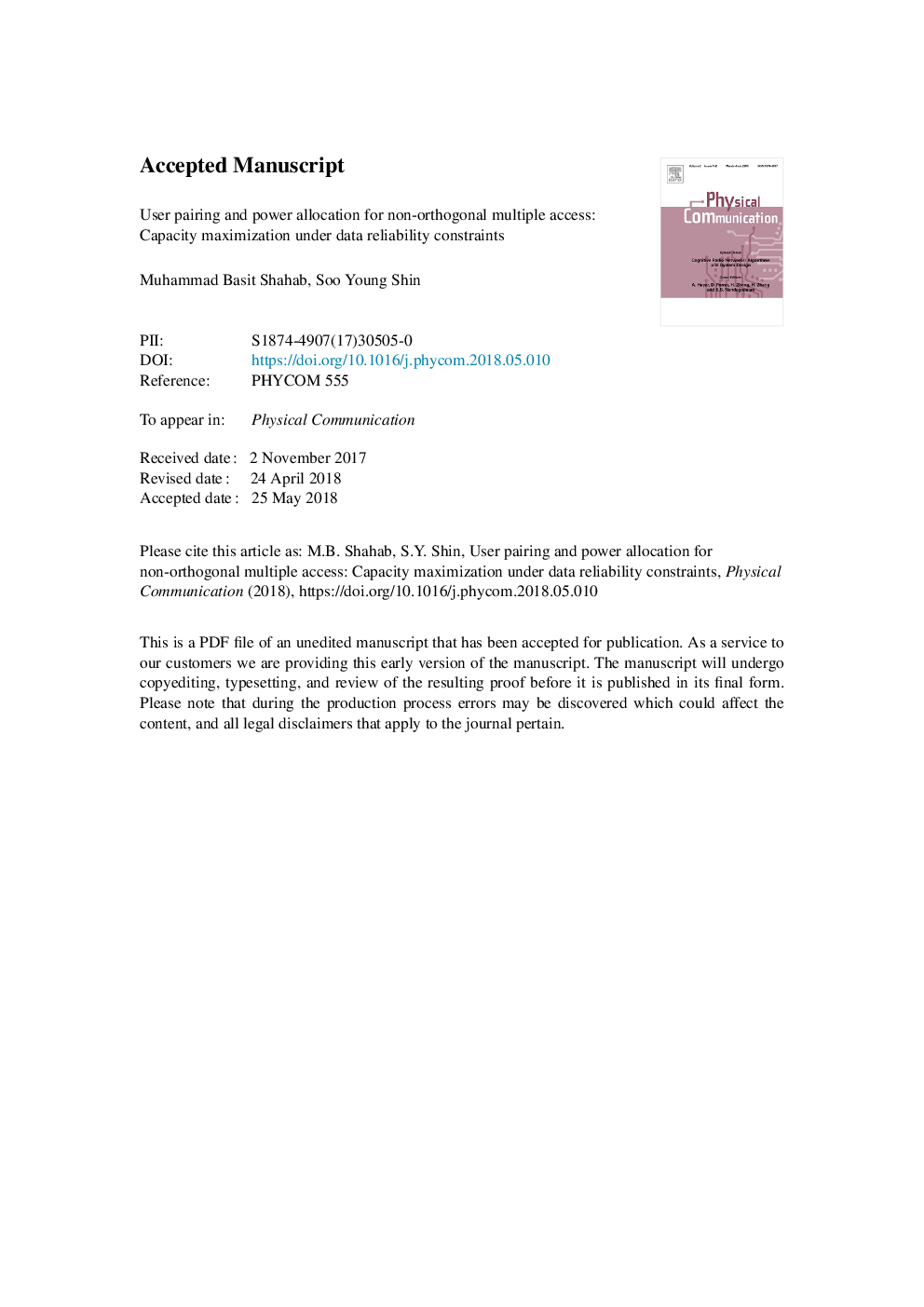| Article ID | Journal | Published Year | Pages | File Type |
|---|---|---|---|---|
| 11002609 | Physical Communication | 2018 | 20 Pages |
Abstract
This paper comprehensively investigates the dynamics of user pairing and power allocation (UPPA) in non-orthogonal multiple access (NOMA). The focal point of this work is to explore the effects of UPPA on capacity and bit error rate (BER) of NOMA users, thereby understanding the tradeoffs involved when UPPA is performed. These tradeoffs facilitate the design of UPPA strategies to maximize system capacity and satisfy individual target data rates of users without exceeding their allowed BER upper bounds to meet the strict data reliability constraints. Data reliability is critical in NOMA and serves as bottleneck to its manifold capacity gains, as NOMA users are prone to significant interference. The existing UPPA strategies focusing on capacity maximization or user fairness completely neglect this extremely critical tradeoff. This paper provides extensive analysis and results of UPPA considering individual/sum capacity and BER of users. Results are summarized in the form of look-up tables, which facilitate swift selection of user pairs and power allocation factors. The process of performing UPPA by using the developed look up tables, such that both capacity and data reliability goals can be simultaneously achieved, is comprehensively explained in the end.
Keywords
Related Topics
Physical Sciences and Engineering
Computer Science
Computer Networks and Communications
Authors
Muhammad Basit Shahab, Soo Young Shin,
